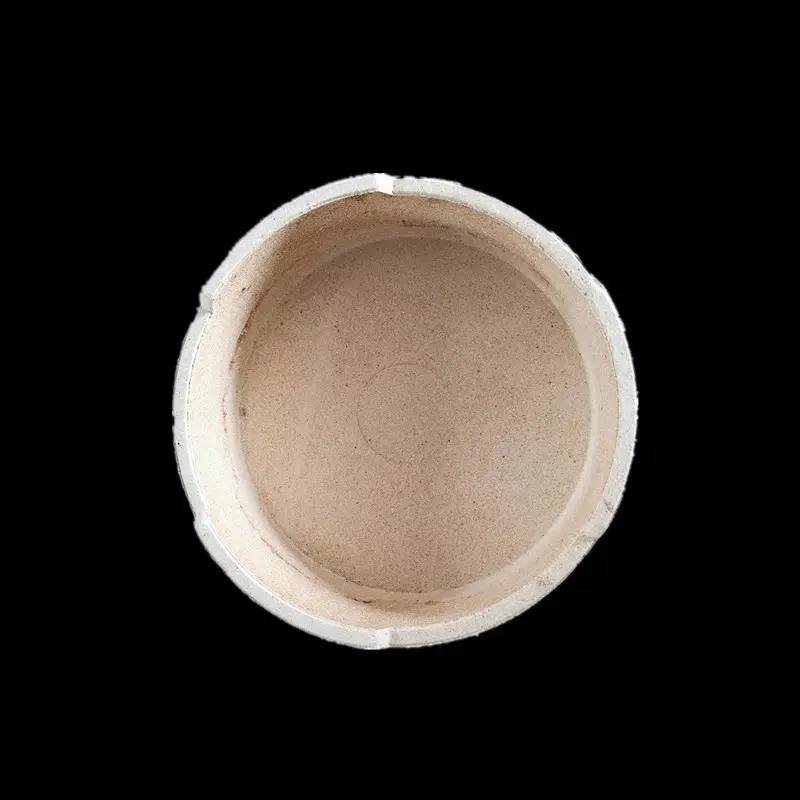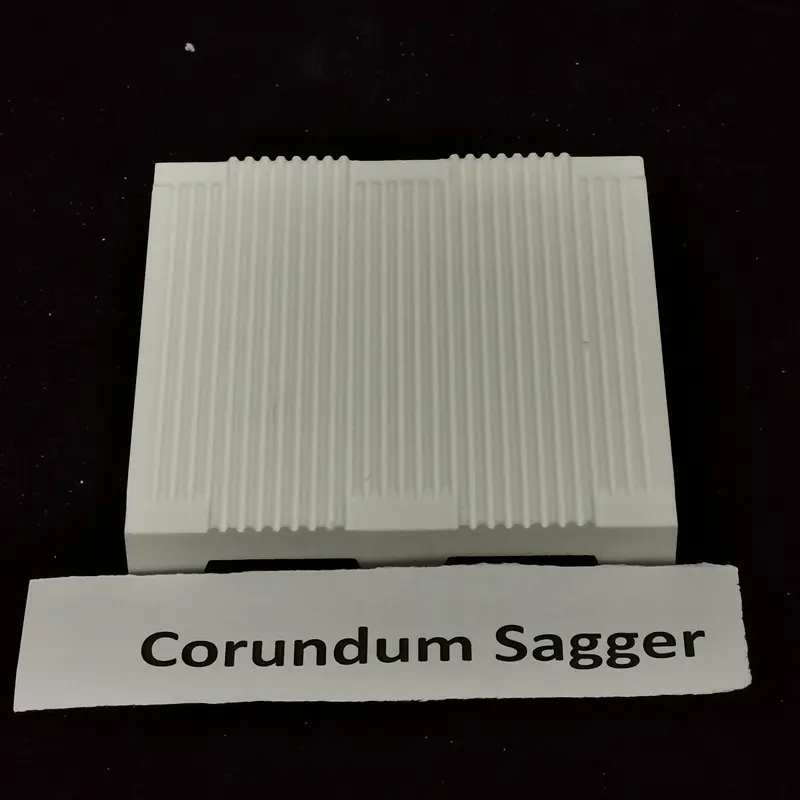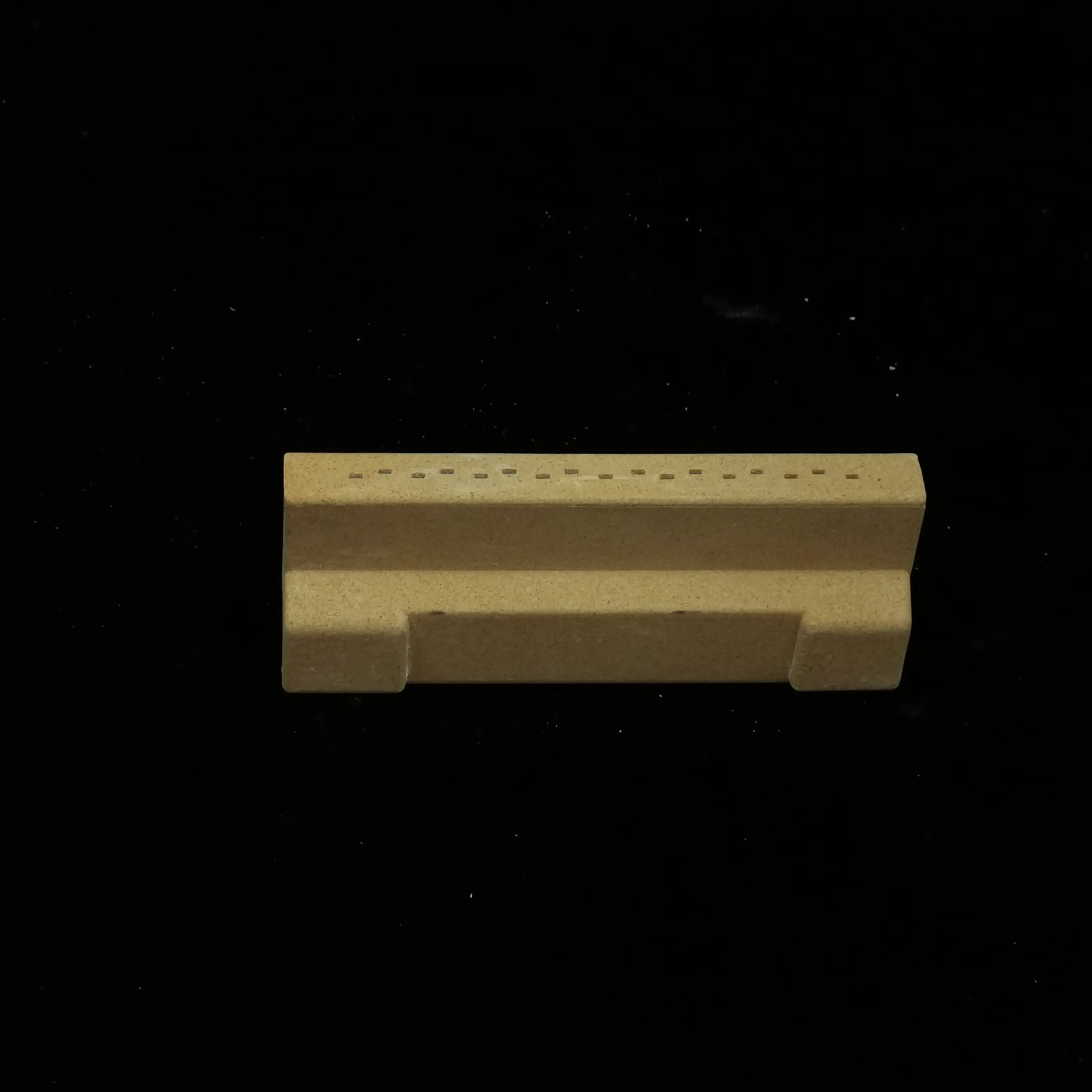High-Temperature 99% Alumina Ceramic Support for Ferrite Cores Firing in Kiln
Ferrite cores, typically composed of iron oxide blended with other metal oxides (such as manganese-zinc or nickel-zinc), require precise sintering at temperatures ranging from 1200°C to 1400°C to achieve optimal magnetic properties. During this process, the ceramic supports must endure extreme thermal conditions without warping, cracking, or reacting with the ferrite material. 99% alumina ceramics excel in this application due to their ultra-high purity, which minimizes impurities that could otherwise contaminate the ferrite cores and degrade their electromagnetic performance.
1. Thermal and Mechanical Properties of 99% Alumina Ceramic Supports
The primary advantage of 99% alumina ceramics is their extremely high melting point (~1850°C), far exceeding the typical firing temperatures for ferrite cores. This ensures that the supports remain dimensionally stable without softening or deforming, even during prolonged exposure to high heat. Additionally, alumina ceramics exhibit low thermal expansion (~8 × 10⁻⁶/°C), reducing the risk of thermal stress-induced cracking during rapid heating or cooling cycles.
Compared to lower-purity alumina (e.g., 95% Al₂O₃), 99% alumina offers superior mechanical strength and hardness, making it more resistant to mechanical wear and thermal fatigue over repeated kiln cycles. This extended durability translates to lower replacement costs and higher production efficiency in industrial settings.
2. Chemical Inertness and Purity
One of the most critical requirements for ceramic supports in ferrite core firing is chemical inertness. Any interaction between the support material and the ferrite composition could introduce impurities, leading to inconsistent magnetic properties or defects in the final product. 99% alumina ceramics are highly resistant to chemical reactions with metal oxides, ensuring that the ferrite cores remain uncontaminated throughout the sintering process.
The ultra-high purity of 99% alumina also means minimal porosity, which prevents gas entrapment and reduces the risk of microcracks forming during firing. This dense microstructure contributes to better thermal conductivity, ensuring uniform heat distribution across the ferrite cores and preventing localized overheating or under-sintering.
3. Design and Application in Kiln Firing
The design of 99% alumina ceramic supports is optimized for maximum thermal efficiency and load capacity in kiln environments. Common configurations include:
-
Flat setters and plates – Used for batch firing of multiple ferrite cores, ensuring even heat exposure.
-
Custom-shaped fixtures – Designed to hold specific ferrite core geometries (e.g., toroids, E-cores, or pot cores) in place during sintering.
-
Multi-layer supports – Enable high-density stacking in kilns, improving production throughput.
To prevent sticking, the surface of alumina supports is often glazed or polished to a smooth finish, allowing easy release of ferrite cores after firing. Some advanced designs incorporate micro-textured surfaces to further minimize contact stress and reduce the risk of deformation.
4. Comparison with Alternative Ceramic Materials
While other high-temperature ceramics (such as zirconia, silicon carbide, or mullite) are sometimes used in kiln applications, 99% alumina remains the preferred choice for ferrite core firing due to its balanced properties:
-
Zirconia (ZrO₂) – Higher toughness but more expensive and prone to phase transformations at certain temperatures.
-
Silicon Carbide (SiC) – Excellent thermal conductivity but can react with certain ferrite compositions.
-
Mullite (3Al₂O₃·2SiO₂) – Lower cost but inferior mechanical strength compared to high-purity alumina.
Thus, 99% alumina offers the best combination of thermal stability, mechanical durability, and chemical compatibility for ferrite core manufacturing.
5. Industrial Benefits and Future Trends
The use of 99% alumina ceramic supports in ferrite core production provides several key advantages:
-
Longer service life – Resistant to thermal cycling and mechanical wear, reducing downtime.
-
Higher product consistency – Ensures uniform sintering, leading to better-performing ferrite cores.
-
Cost efficiency – Despite a higher initial cost than lower-purity alumina, the extended lifespan and reduced defect rates justify the investment.
As demand for high-performance electronic components grows, advancements in ceramic manufacturing—such as additive manufacturing (3D printing) of custom alumina supports and nano-engineered alumina composites—are expected to further enhance the efficiency and precision of ferrite core firing processes.
Conclusion
99% alumina ceramic supports are indispensable in the high-temperature firing of ferrite cores, offering unmatched thermal, mechanical, and chemical properties. Their ability to withstand extreme kiln conditions while maintaining dimensional stability and purity ensures the production of high-quality ferrite cores for advanced electronic applications. As material science and kiln technologies continue to evolve, 99% alumina ceramics will remain a cornerstone of efficient and reliable ferrite core manufacturing.





